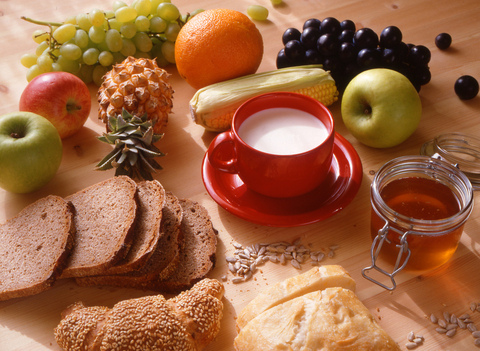What is gum disease?
March 18th, 2015

Gum disease, also called periodontal disease, is an infection of the gum tissues, and is something seen all too often by Dr. Kenneth Sloane. Extending from inflammation of the gums (gingivitis) to more serious infections and complications (periodontitis), there is a wide range of gum disease severity.
Not only does gum disease affect the health of your mouth and teeth, but according to the National Institute of Dental and Craniofacial Research, it can affect your general health as well. This is because an infection in the mouth as a result of gum disease can travel to other parts of your body through the bloodstream. Gum disease is also a risk factor for heart disease, and can play a role in blood sugar levels.
Causes and Risk Factors
Gum disease is essentially caused by the build-up of bacteria in your mouth. If you brush and floss every day, this bacteria is washed away, but if not, it turns into plaque. If left unchecked, this plaque buildup can lead to gum disease.
Some of the common risk factors for gum disease include not taking good care of your teeth, failing to have one’s teeth cleaned every six months, experiencing hormonal changes, smoking cigarettes, developing diabetes, being genetically exposed to gum disease, or taking certain types of medications.
Gingivitis versus Periodontitis
There are two main types of gum disease: gingivitis and periodontitis. Both are bad for you, but gingivitis is less severe. It is typically the first stage, and involves inflammation of the gums from plaque and tartar on the teeth. If your gums are swollen and bleed, this is a sign of gingivitis.
Periodontitis, a more severe case of gum disease, occurs when your gums pull away from the teeth and pockets form. These pockets are a concern because they can harbor infection.
Treatments for Gum Disease
Treatments for gum disease depend on the cause and severity. Deep cleaning to remove the plaque underneath the gum line – called root scaling and planing – is one of the most common treatments for gum disease. Antibiotics placed under the gums to rid you of an infection or reduce the inflammation may also be advised. In some cases, surgical procedures, including flap surgery and bone and tissue grafts, are needed.
If you have bleeding or swollen gums, pockets between your gums and teeth, pain, or other issues, you might have gum disease. Visit Kenneth Sloane, DDS for an exam and learn the best course of action.
St. Patrick's Day
March 11th, 2015

On March 17, everyone has a little Irish in them. St. Patrick’s Day is a joyous celebration of Irish heritage. The holiday originated as a commemoration of Saint Patrick, who brought Christianity to Ireland. The saint arrived in Ireland in 432 and earned the reputation of a champion of Irish Christianity. March 17th, the day of St. Patrick’s death, has been commemorated by the Irish for over 1,000 years. St. Patrick’s Day is still observed as a religious feast day by several Christian denominations, but it is better known in the public imagination as a rich celebration of Irish culture.
St. Patrick’s Day has been an official public holiday in Ireland since 1903. Each year, the Irish celebrate with a several-day festival that includes theater performances, music, fireworks, and festive parades. The celebration is also a public holiday in Northern Ireland, Montserrat, and Newfoundland and Labrador. In other parts of the world with heavy Irish populations, it is an unofficial celebration of Irish heritage. Parts of Great Britain, Canada, Argentina, South Korea, Switzerland, New Zealand, the United States, and Australia commemorate the holiday each year. Typical celebrations in these countries include drinking green beer, wearing green, eating traditional Irish foods, parades, and shamrock decorations.
Many people, Irish and non-Irish alike, take part in the “wearing of the green” on St. Patrick’s Day. In fact, the color originally associated with Saint Patrick was blue. His use of shamrocks to explain the Holy Trinity to the Irish made the green clover emblematic of the holiday, leading to the traditional green attire worn by thousands on St. Patrick’s Day. Other little-known facts about St. Patrick’s Day include the following:
- Each year, the United States and Ireland face off in a rugby competition called the “St. Patrick’s Day Test.”
- Montreal celebrates the holiday with an annual parade, which has been held each year since 1824. The Montreal city flag even features a shamrock in its corner, as a nod to its Irish heritage.
- The Guinness World Records named St. Patrick’s Day the “Friendliest Day of the Year.”
- Along with Valentine’s Day, St. Patrick’s Day is one of the most widely celebrated saint’s day in the world.
No matter your cultural heritage, St. Patrick’s Day is a great time to let loose and celebrate your inner Irish-ness! Don your greenest attire and exclaim “Erin go Bragh!” (Ireland forever!) to everyone you meet. From Dr. Kenneth Sloane - have a great St. Paddy’s day!
March is National Nutrition Month!
March 4th, 2015

While you don’t have to wait to start eating right, March is the month the Academy of Nutrition and Dietetics asks everyone to pay special attention to what goes into our bodies. The Academy has designated the month of March for focusing the public’s awareness on what they eat.
What Not to Eat
The academy points out that the foods you eat have a direct effect on the health of your teeth and specifically on tooth decay. Bacteria rely on carbohydrates to thrive. That is why Dr. Kenneth Sloane and our team at Kenneth Sloane, DDS tell our patients to cut back on both candy and sweets. They consist of simple sugars that feed the bacteria in your mouth and enhance tooth decay.
It’s the hidden sugars that will cost you, though. Get in the habit of reading labels on food and looking for products with added sugar. This includes ingredients that end with the suffix “ose.” When it comes to nutrition, these foods offer little value beyond satisfying that sweet tooth.
What You Should Eat
Turn to foods that not only taste good but are good for your teeth too. Dairy products, for example, provide the body with nutritional items that support tooth enamel. Foods high in protein feature phosphorus, a nutrient critical to oral health.
You can’t really go wrong by adding color to your diet, either. Fruits and vegetables make for a colorful plate and a healthy meal. Use some caution with acidic fruits like oranges or even tomatoes, because the acid can erode tooth enamel. It is better to include these foods in a meal instead of eating them by themselves.
Remember, good nutrition is something you should worry about all year long, not just when celebrating National Nutrition Month. March just serves as a fun reminder that eating right is a proactive step in managing your dental health.
We encourage you to give us a call at our Closter, NJ office to learn more!
The Importance of Baby Teeth
February 25th, 2015

Dr. Kenneth Sloane and our team know it can be easy to underestimate the significance of baby teeth. At Kenneth Sloane, DDS, we sometimes meet parents who assume that since their child's baby teeth, also known as primary teeth, eventually fall out and are replaced, they are less important. But did you know baby teeth serve purposes other than biting, chewing, and digesting food properly?
Baby teeth are essential not only for your child’s language development, but they also serve other important functions, like contributing to the normal development of your child’s jaw bones and facial muscles. Baby teeth also reserve space for your child’s future permanent teeth.
So, when do baby teeth fall out?
A baby tooth is intended to remain in your child’s mouth until the permanent tooth underneath it is ready to take its place. Sometimes, either due to a tooth being knocked out accidentally or being removed because of tooth decay, kids lose baby teeth before the permanent teeth are ready to erupt. If a tooth is lost, the teeth on either side of the open space may possibly push into the open space. The result? There may not be enough room for the permanent tooth when it is finally ready to erupt.
If you have any questions about your toddler’s teeth, or if your child is experiencing issues that concern you, please give us a call to set up an appointment at our convenient Closter, NJ office.






